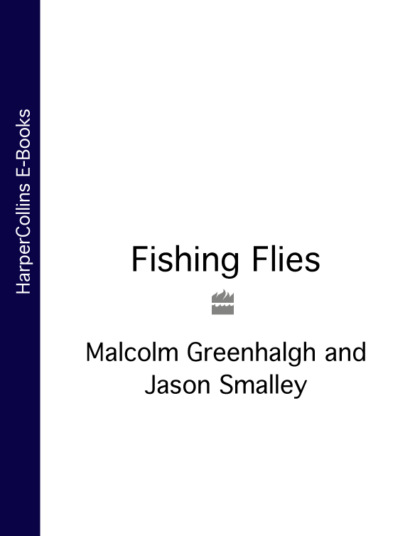По всем вопросам обращайтесь на: info@litportal.ru
(©) 2003-2024.
✖
Fishing Flies
Настройки чтения
Размер шрифта
Высота строк
Поля
NOTE: Some writers have included larvae and pupae, and other subsurface aquatic invertebrates such as water boatmen (back swimmers) and freshwater shrimps (scuds), with nymphs. Scientifically this is incorrect. In years to come even the word ‘nymph’ may slowly vanish, for freshwater biologists now call nymphs, ‘larvae’, thus ceasing to differentiate between the incomplete and complete growing stages of metamorphosis life cycles.
CADDIS LARVAE
There are two categories of caddis larvae: those that are protected by a case made from sand, small pebbles, bits of twig or pieces of leaf, held together with silk – and those that do not have a case, though they acquire one just before pupation. Both categories are imitated with fishing flies.
CASED CADDIS
Because these live on the river- or lake-bed it is important to add weight to the dressing (rules permitting). This can be done by:
Lashing lead wire or foil strips to the top of the hook shank (this helps the finished fly fish ‘point up’ so that it avoids snagging).
Winding lead wire around the shank. More weight can be added with this method – but the hook point is more likely to snag bottom.
Fitting a tungsten bead (or goldhead or silverhead) to the hook behind the eye.
Fitting a piece of split shot to the hook just behind the eye. To do this, fix a split shot (BB is about right) onto a loop of 3lb leader material, and then bind the loop to the top of the hook shank, with the shot tight against the shank behind the eye. Paint the shot black to suggest the head of the caddis larva protruding from its case. Note too that, with the shot fixed in this way, the fly will tend to fish upside-down.
Cased caddis larvae have a very soft, dirty white, cream or palest olive body. It is well worth imitating this in all cased caddis flies by winding a thin layer of cream, or palest olive floss or wool over the shank (and any ballast). This will show through any gaps in the case and may act as a trigger to the trout. Several patterns have been called Peeking or Peeping Caddis because they have a smidgen of cream or pale yellow wool between the case and the head, suggesting that the larva is partially out and having a good look round! This feature ought to be included in all cased caddis imitations.
FUR-BODIED CASED CADDIS
Hook: Nymph or long shank, sizes 8–14.
Thread: Black.
Case: Coarse brown or sandy dubbing with plenty of guard hairs (e.g. hare’s ear or mask).
Rib: Fine silver wire.
Thorax: A tiny amount of cream dubbing or wool at front of case.
Legs: 2 turns of short-fibred black hen hackle.
Head: Black thread or black split shot.
Especially useful where the bottom is sand or silt. In Spain this is tied
with hare’s fur and a thick black rib.
FEATHER-BODIED CASED CADDIS
Hook: Nymph or long shank, sizes 8–14.
Thread: Black.
Case: Take several large coarse hackles (e.g. mallard, grouse, grey partridge, upper wing coverts). Tie one in by its tip at the end of the hook shank and palmer it forward in touching turns; tie it off when almost run out. Then tie in and palmer a second, and so on until the length of the case is correct. After ribbing, trim back the feather fibres to give a case that resembles a mass of tiny bits of twig.
Rib: Fine gold wire.
Thorax: A tiny amount of cream dubbing or wool at front of case.
Legs: 2 turns of hen furnace hackle.
Head: Black thread or black split shot.
A caddis to use in well-wooded streams and lakes, or where there is plenty of detritus on the bottom.
HERL-BODIED CASED CADDIS
Hook: Nymph or long shank, sizes 8–14.
Thread: Black.
Case: Wound herl (see here (#ulink_86631855-5dad-5015-825e-3e4589012b1d)); if using goose quill or pheasant tail, about five or six fibres will be needed.
Rib: Fine gold wire.
Thorax: A tiny amount of cream dubbing or wool at front of case.
Legs: 2 turns of brown or black hen hackle.
Head: Black thread or black split shot.
NOTE: Use dyed green goose herl to imitate a case constructed from the leaves or stems of water weeds, brown or grey goose to simulate a case made from silt, cock pheasant tail to match a case made from sand. If fishing crystal clear limestone rivers (such as Slovenia’s Soca) a case made from white goose quill matches the white limestone sand cases of the local caddis.
PHRYGANEA CASED CADDIS
Hook: Nymph or long shank, sizes 8–14.
Thread: Black.
Case: Bright green herls (e.g. goose, swan), tied in by their tips at end of hook shank, then brought forward and tied in at the front of the hook shank, so that the herls run parallel to the hook shank.
Rib: Black thread.
Thorax: A tiny amount of cream dubbing or wool at front of case.
Legs: 2 turns furnace or natural red (brown) hen.
Head: Black thread or black split shot.
Caddis in the Family Phryganidae live mostly in weedy lakes and make beautifully crafted cases from sections of green waterweed, formed in a spiral arrangement. This pattern imitates those cases.
The next caddis imitation is tied back-to-front, in that the head of the insect is at the end of the hook shank. By fixing the shot in place on top of the hook shank, the fly tends to fish upside-down, with hook point uppermost. This reduces the chance of the fly snagging on the bottom.
PEEPING CADDIS
Hook: Nymph, sizes 12–14.





